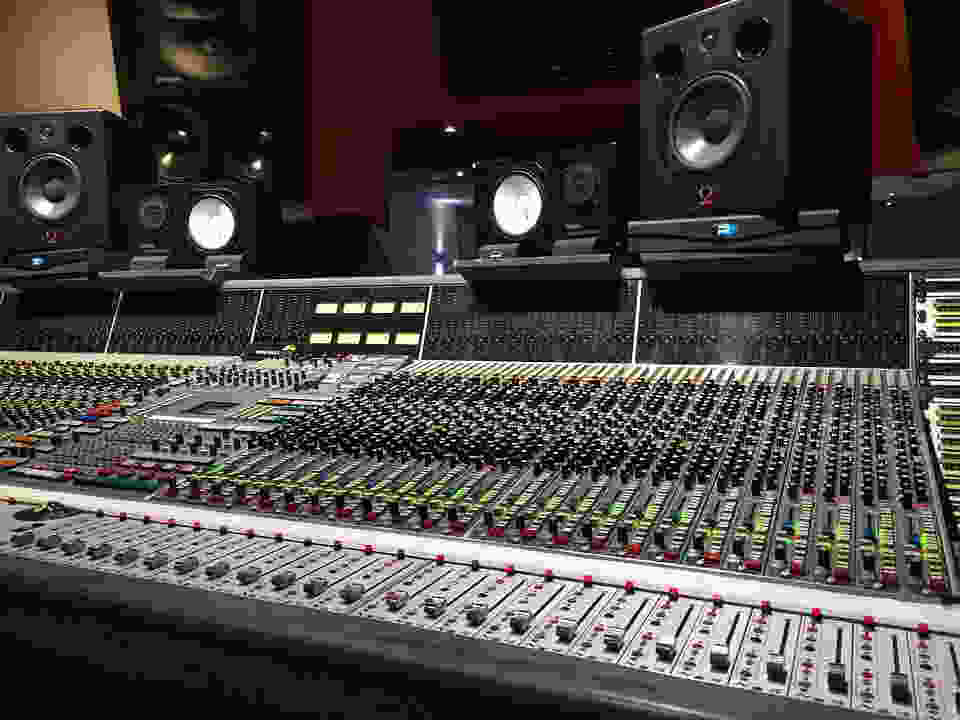You just made some beautiful music – you may have also recorded a singer or rapper on it. Now, the only thing between the masterpiece you have created and your listeners is the mixing process.
To be honest, mixing can prove to be a very daunting task, sometimes taking several hours (or days) per track. If you are a producer, you probably spend more time on improving your mixing skills than beatmaking or arranging.
Before I go into the nitty-gritty of mixing, one crucial factor you need to sort out is your listening environment. This includes your listening gear and your room.
You need to make sure your source is feeding you “the truth” i.e. what you’re hearing is as transparent as possible. You also need to make sure your room acoustics do not compromise the information you’re getting from your speakers or headphones.
There’s a lot more to say on the subject of room acoustics, and if you are not quite sure how to go about fixing up your room, I’ll advise that you go with headphones. The best are planar magnetic headphones you can use for mixing and get transparent sounds.
Things to consider while doing audio mixing:
Listening Level
Now to do mixing properly, one thing you need to consider is to set your volume levels. Bear in mind that while mixing, it is better to set your monitoring volume such that you can hear normal volume speech above the music playing.
There are two main reasons for this:
First, listening at the reduced level will preserve your eardrums and prevent them from tiring out easily. This means you can mix for extended hours without getting jaded. The second reason is that it limits the effect of room reflection since the sound is barely even hitting the walls.
Gain Staging
Next is gain staging. This is where you work on the volumes of individual instruments and voices. The goal here is to adjust them such that the main output has enough headroom. This is assuming that you employed proper gain staging during the tracking process, as well (be sure to keep this high on the priority list during each stage of the process, from recording to mixing and mastering.)
Headroom is the difference between your main output level and the clipping level. So, what you’re doing here basically is to drop the peaks on tracks that are too close to the clipping point.
Balancing
After gain staging, you want to determine where each track sits, volume-wise. Depending on the style or genre of music you’re working on, different instruments have different average volume levels .i.e. some elements of the music would generally be louder than others.
So, you are trying to set the volume levels for each element here. This stage is important because, even though you haven’t gone far in the process, you can make sense of the music.
Equalization
Equalization is the next big thing in line in our journey to effective audio mixing. What an EQ does basically is to give “shape” to the sound. The overall sonic quality of your music is majorly tied to your EQ process. Here are some EQ tips, which work in a large percentage of scenarios:
- Roll of frequencies below 80Hz on all instruments and vocals except the kick and bass.
- Wide boosts, narrow cuts.
- Try EQing in mono first, after which you switch back to stereo to check the soundstage and for any lingering phase issues.
- If you can, create a little dip between 2KHz and 4KHz when EQing the instruments to create room for the vocals
Compression
In order of importance, after equalization, compression should come up. Essentially, compression is the process of making the general volume of a track, vocal or instrument automate itself, attenuating and increasing as the music progresses. However, compression has evolved to become something of art on its own.
Compression can give character to the vocal or instrument to which it is added. Careful manipulation of the threshold, gain, attack, and release knobs on the compressor can give different dynamics to the elements of the music. Work with the knobs and presets to know what works for which.
Delay and Reverb
To further cement the place of each element in the music, reverbs and delays are necessary. Reverbs can help the elements of music reside better in 3D space — you can use subtle or exaggerated reverb settings to help a listener have the sensation of an element being in real spatial locations.
More reverb can make a snare sound as though it is behind the piano, but drying up the snare .i.e. reducing the reverb will bring it forward, so to speak.
What delay does is quite similar to reverb. However, if you master your delay plug-ins well, there are several effects that you can use on your vocals and instruments. Among other things delay can make a sound “bigger”. Whether a vocal or a guitar sound, when the delay is well applied, there can be much more depth to the sound.
In Closing
Above all, you must always remember the rule of thumb, “if it ain’t broke, don’t fix it.” Especially when using the EQ and compressor, if it sounds good, then don’t over process it. This is especially true of distorted guitars that may already be heavily compressed, or synths pumping out pure square waves that don’t really require any additional post work.
The whole point of mixing is to make beauty in the music more obvious to the listener. Therefore, the most important part of all of this is the music in itself. Make good music, get good recordings with the best front-end you can manage, and you can be sure to have a smooth mixing process.
ABOUT THE AUTHOR
Akshay R.H is an audiophile and a professional blogger at SoundMaximum, covering everything he’s learned regarding audio recording and high-end audio equipment.
